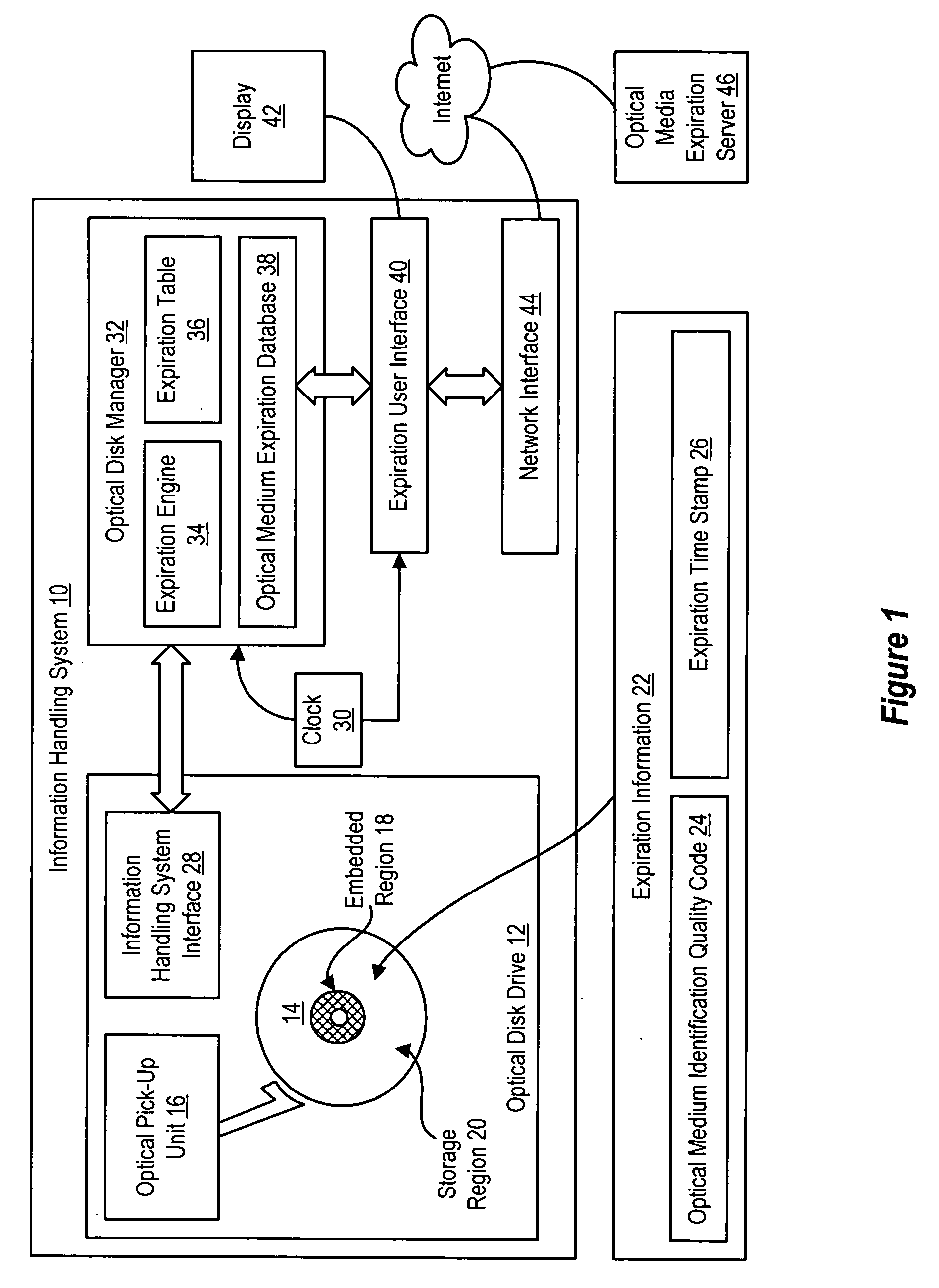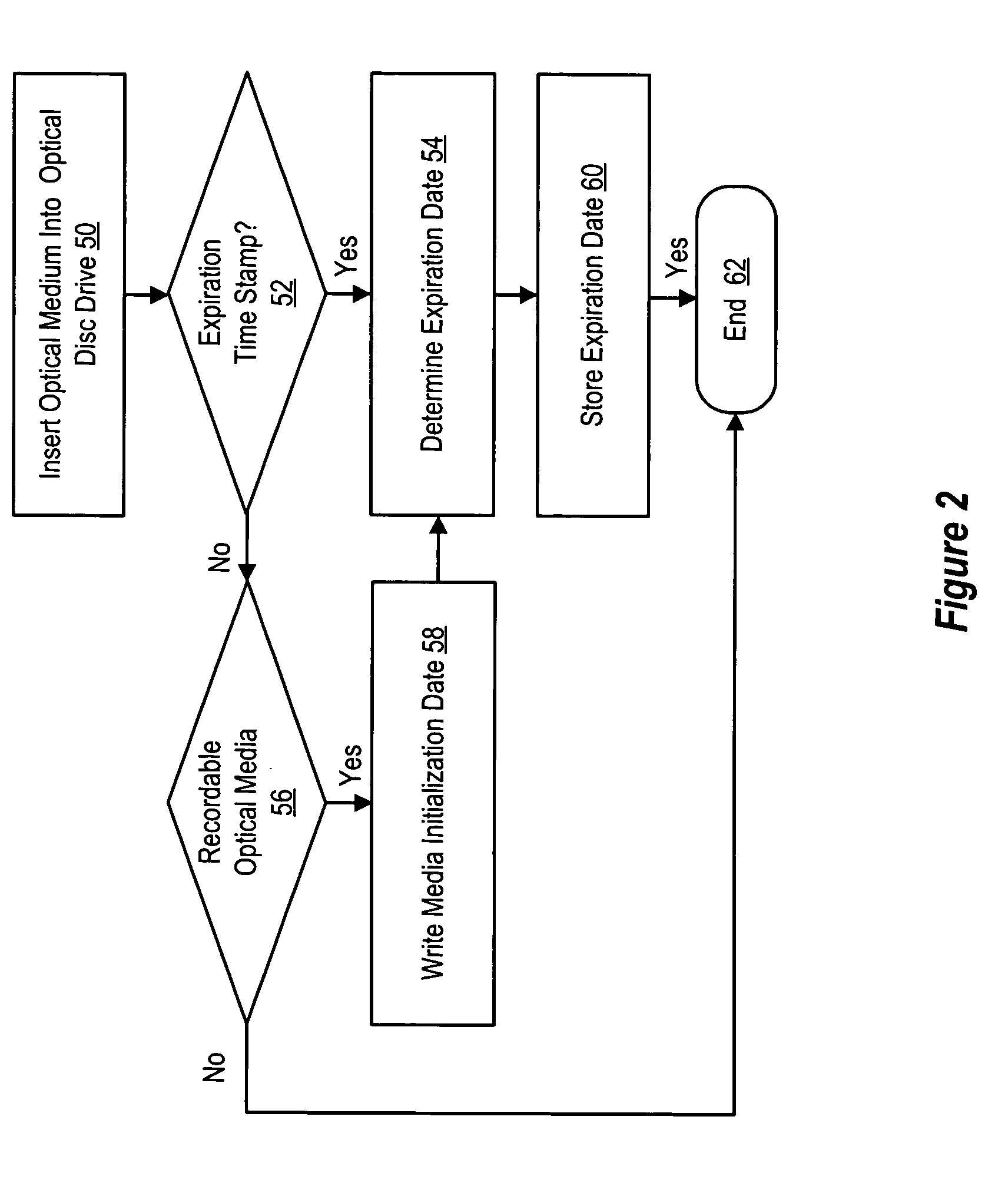System and method for optical media information storage life tracking
a technology of information storage and optical media, applied in the field of optical media information storage life tracking, can solve the problems of limited lifespan of optical media, failure of optical media, and largely stagnant storage capacity of portable magnetic discs, so as to increase user confidence in the selection and improve the reliability of optical media
- Summary
- Abstract
- Description
- Claims
- Application Information
AI Technical Summary
Benefits of technology
Problems solved by technology
Method used
Image
Examples
Embodiment Construction
[0015] Information stored on optical media is protected from loss related to aging of the optical media reading expiration information from the optical media and applying the expiration information to determine an expiration date of the optical media. Information handling system users are thus able to track the life span over which the optical media will reliably store information and reallocate the information to other storage media before defects built-up in the optical media over time results in the loss of the information. For purposes of this disclosure, an information handling system may include any instrumentality or aggregate of instrumentalities operable to compute, classify, process, transmit, receive, retrieve, originate, switch, store, display, manifest, detect, record, reproduce, handle, or utilize any form of information, intelligence, or data for business, scientific, control, or other purposes. For example, an information handling system may be a personal computer, a...
PUM
 Login to View More
Login to View More Abstract
Description
Claims
Application Information
 Login to View More
Login to View More - R&D
- Intellectual Property
- Life Sciences
- Materials
- Tech Scout
- Unparalleled Data Quality
- Higher Quality Content
- 60% Fewer Hallucinations
Browse by: Latest US Patents, China's latest patents, Technical Efficacy Thesaurus, Application Domain, Technology Topic, Popular Technical Reports.
© 2025 PatSnap. All rights reserved.Legal|Privacy policy|Modern Slavery Act Transparency Statement|Sitemap|About US| Contact US: help@patsnap.com



